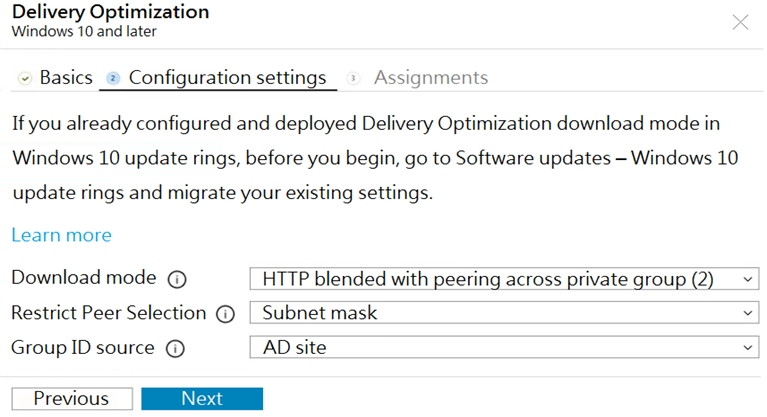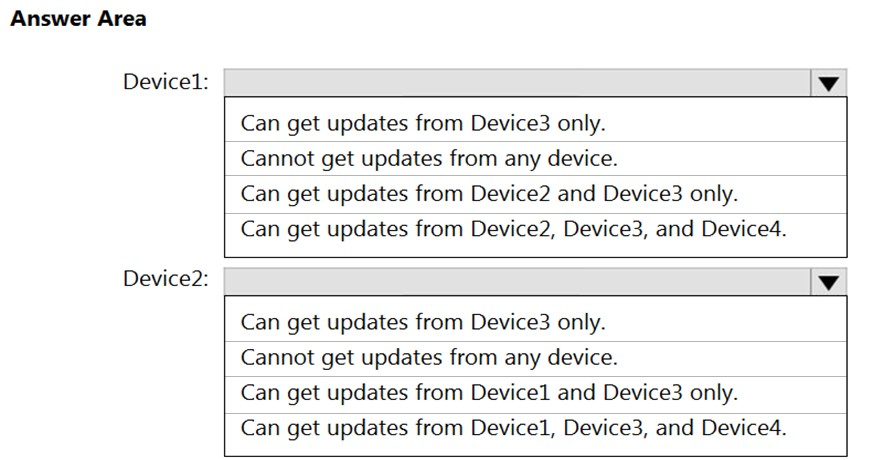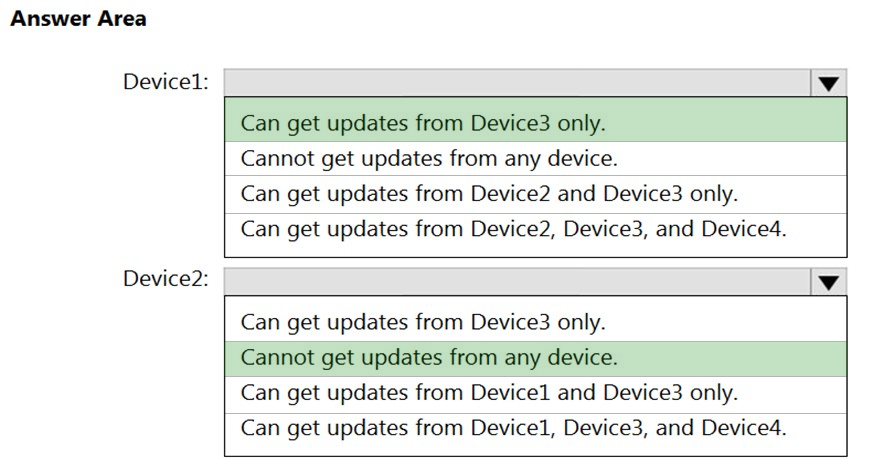

HOTSPOT -
Your network contains an on-premises Active Directory domain that contains the locations shown in the following table.
In Microsoft Intune, you enroll the Windows 10 devices shown in the following table.
You have a Delivery Optimization device configuration profile applied to all the devices. The profile is configured as shown in the following exhibit.
From which devices can Device1 and Device2 get updates? To answer, select the appropriate options in the answer area.
NOTE: Each correct selection is worth one point.
Hot Area:

czara6
Highly Voted 3 years, 8 months agoNorthBlueEdd
3 years, 2 months agomusiman
3 years, 5 months agoRodrigoT
3 years, 2 months agoNerovats74
2 years, 8 months agoNerovats74
2 years, 8 months agoblueninja
3 years, 8 months agoCGtheConqueror
3 years, 5 months agoDogeZaemon
3 years, 7 months agoRodrigoT
3 years, 2 months agoPiPe
Highly Voted 3 years, 4 months agoAVR31
3 years, 1 month agoAmir1909
Most Recent 1 year, 4 months agolannythewizard
2 years, 1 month agoRaxon
2 years, 2 months agoranddrick
3 years, 1 month agocbjorn8931
2 years, 7 months agoGraz
2 years, 5 months agoRaxon
2 years, 3 months agolannythewizard
2 years, 1 month agoMR_Eliot
3 years, 1 month agocbjorn8931
2 years, 7 months agocbjorn8931
2 years, 7 months agomoobdoob
3 years, 4 months agocbjorn8931
2 years, 7 months agoGraz
2 years, 5 months agoforummj
3 years, 4 months agoLoganBundrant91
3 years, 5 months agoRodrigoT
3 years, 2 months agoGoofer
3 years, 7 months agolijk_manson
3 years, 7 months ago